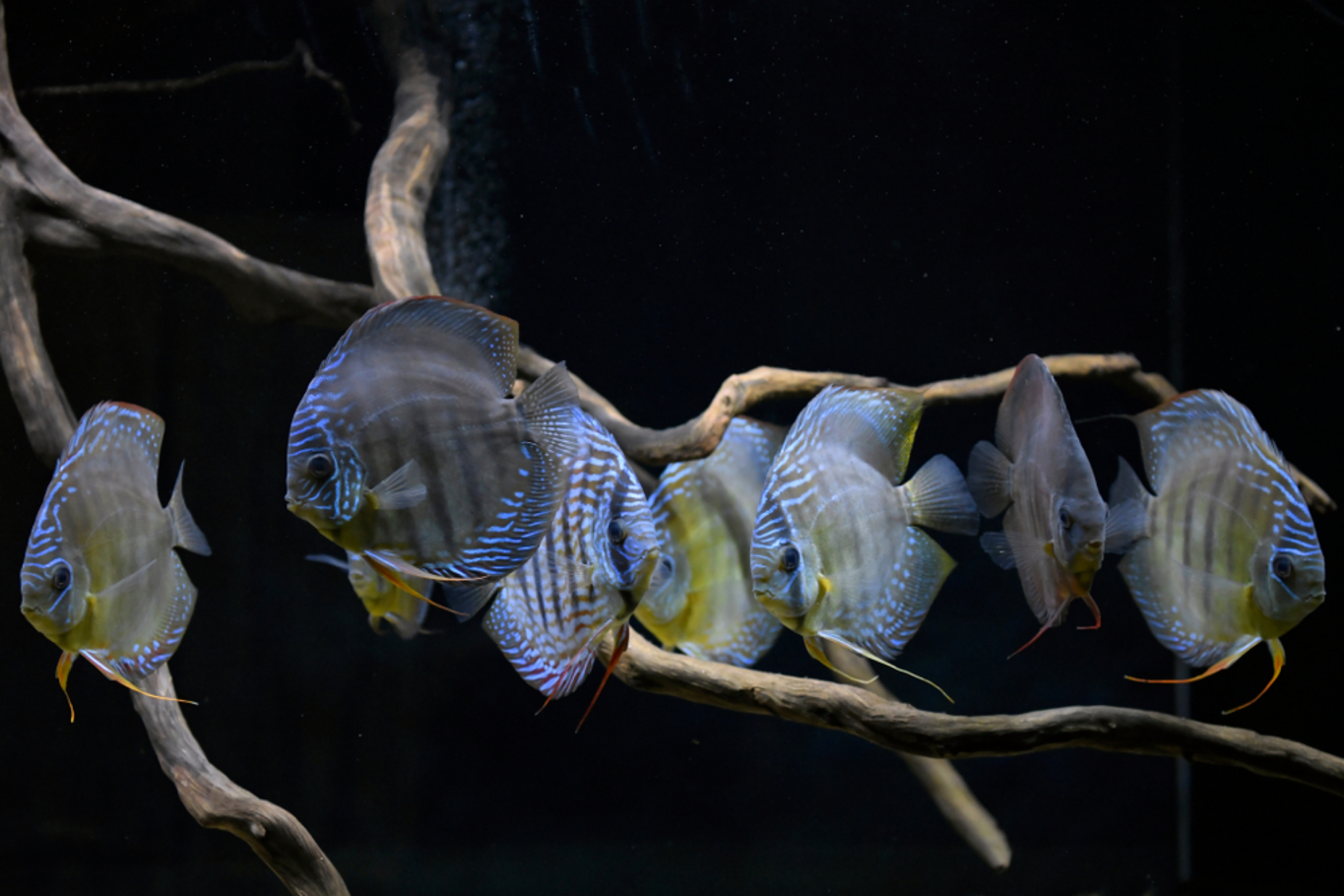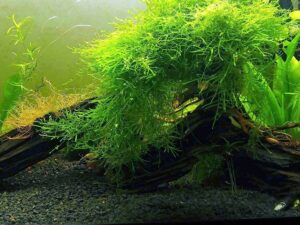In the case of the beautiful discus fish, known for its vibrant colors and majestic presence, ensuring optimal tank conditions is essential. One key component in achieving this balance is selecting the right companions for your discus, and among the top choices are snails. But what are the best snails for discus tank, and how can they assist in keeping your aquarium pristine?
The best snails for discus tank include Nerite, MTS, Ramshorns, Mystery, and Pond snails. Prioritize algae-eating abilities, avoid overpopulation, and ensure compatibility with discus temperatures. Assassin snails naturally control snail overpopulation. Always maintain a balanced aquarium ecosystem.
In this guide, we’ll dive into the best snails for discus tanks and how they can assist in keeping your aquarium pristine.
Nerite Snails
Recognized for their striking patterns and diligent cleaning habits, Nerite snails have made a mark in aquascaping.
- Benefits: If you’re seeking efficient algae control, look no further. Nerite snails are renowned as exceptional algae-eating snails for discus. They are tireless workers, scouring the tank surfaces to remove even the most stubborn algae.
- Concerns: On the downside, Nerite snails have a habit of laying eggs everywhere, which can sometimes be an eyesore. However, these eggs don’t hatch in freshwater, so there’s no risk of a population explosion.
MTS (Malaysian Trumpet Snails)
Distinguished by their elongated spiral shells, Malaysian trumpet snails are nocturnal creatures that add to the tank’s nighttime activity.
- Benefits: One of their standout features is their ability to go unnoticed by discus, meaning they are not usually consumed. This ensures they can focus on their primary role – keeping the tank clean.
- Concerns: While they are beneficial, there’s a catch. Given the right conditions, MTS can rapidly multiply, leading to concerns about snail overpopulation in discus tanks.
Ramshorns
Characterized by their unique circular shell, Ramshorns provide aesthetic and functional benefits to the tank.
- Benefits: Especially the red variety, these snails are effective cleaners, adding utility and a splash of color to your aquarium.
- Concerns: Like MTS, Ramshorns can potentially overpopulate, so keeping an eye on their numbers is advised.
Mystery Snails
With their round shells and diverse color palette, Mystery snails are a favorite for those looking to add a touch of beauty to their setup.
- Benefits: Often chosen for their aesthetic appeal, these snails are also known to be good algae eaters.
- Concerns: One of the primary concerns with Mystery snails is their ability to survive in the warmer temperatures preferred by discus. Thus, their compatibility in terms of snails that can survive discus temperatures is uncertain.
Pond Snails
Often overlooked because of their common appearance, Pond snails are hardy creatures with a penchant for cleanliness.
- Benefits: As natural cleaners, they help maintain the tank’s cleanliness without any intervention.
- Concerns: Being on the smaller side, they can become a quick meal for discus. Also, if not monitored, they might add to the problem of snail overpopulation in discus tanks.
Assassin Snails
Assassin snails offer a natural solution for those dealing with pesky snail overpopulation.
- Benefits: These carnivorous snails are known to hunt down and eat various smaller snail species, making them an excellent choice for naturally controlling snail overpopulation in discus tanks. They are also relatively harmless to other tank inhabitants and do not target large snails, ensuring a balance in the tank’s ecosystem.
- Concerns: While they effectively reduce snail populations, if they deplete their food source (other snails), they might start scavenging for other food sources. It’s also important to note that they breed less prolifically than some other snails, so they won’t rapidly overpopulate a tank.
Alternatives to Snails for Algae Control
Not everyone is a fan of snails, and that’s okay. There are alternatives if you’re looking for other organisms to help control algae and maintain a clean discus tank.
- Plecos: Differentiating between the BN (Bushy Nose/Bristle Nose) and common plecos is crucial. While both are effective algae eaters, the BN variety is smaller and generally more suited to discus tanks. Understanding the nuances of pleco and discus compatibility can help ensure both species thrive together.
- Amano Shrimp: These small shrimps are excellent algae eaters and are compatible with discus, adding variety to the tank’s inhabitants.
- Ottos: Another worthy addition to a discus tank is the Otocinclus catfish, or Ottos for short. These small, industrious fish are outstanding algae eaters. However, one aspect to be cautious about is their tendency to attach themselves to the sides of larger fish, like discus, especially when hungry. While this behavior usually doesn’t harm the discus, it can be stressful for the larger fish.
Addressing Snail Overpopulation in Discus Tanks
Snail overpopulation in discus tanks is a common concern for many aquarium enthusiasts. It’s a sign that the ecosystem in your tank might be out of balance.
Let’s delve into the causes and the steps you can take to address this issue.
Causes of Overpopulation
The primary reasons for the snail boom include overfeeding, excess decaying plant matter, and the absence of natural predators. Overfeeding results in leftover food that snails love to feast on. Likewise, decaying plants offer an abundant food source, promoting rapid reproduction.
Solutions
- Hand-picking: One of the most straightforward solutions is manually removing the snails from the tank. This method is time-consuming but effective for immediate control.
- Introducing snail predators: Certain fish species, such as the loach, are known to feed on snails. However, ensure compatibility with discus before introducing any new species.
- Controlling food sources: Be cautious with the amount of food you introduce into the tank. Overfeeding is a primary cause of overpopulation. Adopting a feeding regimen tailored to your fish’s needs can prevent excess food, which, in turn, controls snail reproduction.
Considerations for Introducing Snails to Discus Tanks
Introducing any new species to a discus tank requires careful consideration. Here are some vital points to ponder when thinking about adding snails:
- Temperature considerations: Discus thrives in warmer waters, typically between 82°F to 86°F (28°C – 30°C). It’s essential to opt for snails that can survive discus temperatures. While some snails can manage these temperatures, others might find it challenging, leading to reduced lifespans.
- Compatibility with other fish and invertebrates: While discus are generally peaceful, they can sometimes view smaller snails as food. Choose snails that coexist peacefully without becoming a snack for the larger fish. Similarly, understanding Pleco and discus compatibility is crucial when considering tank mates.
- Potential risks of disease or parasite introduction: Any new addition to an aquarium can potentially introduce diseases or parasites. Before introducing them to the main tank, quarantining new arrivals and ensuring they’re disease-free is critical.
Conclusion
In a discus tank, every choice, from selecting the best snails for discus tank to understanding discus tank maintenance, contributes to its delicate balance. While snails offer benefits like algae control, they also pose challenges, such as overpopulation.
As you consider introducing snails, ensure they harmoniously fit into the tank’s ecosystem. Research, plan, and always prioritize the well-being of all tank inhabitants.



